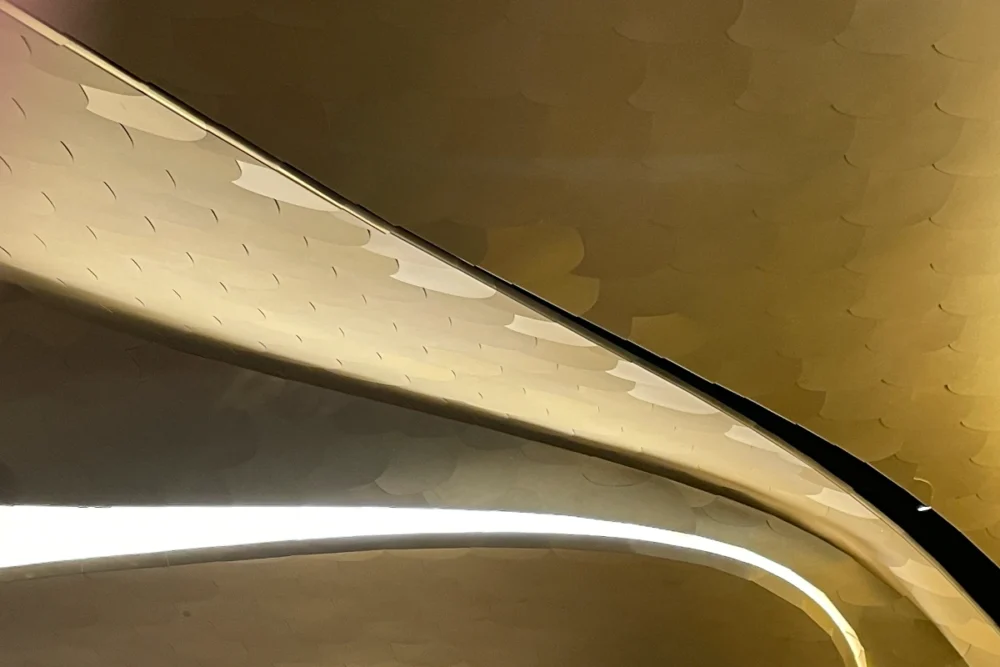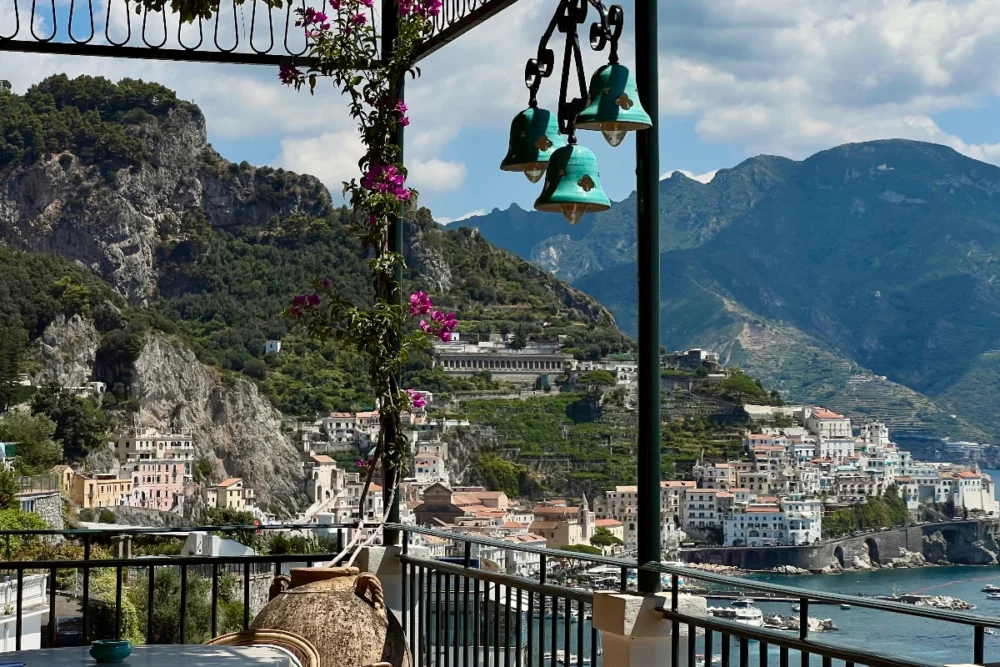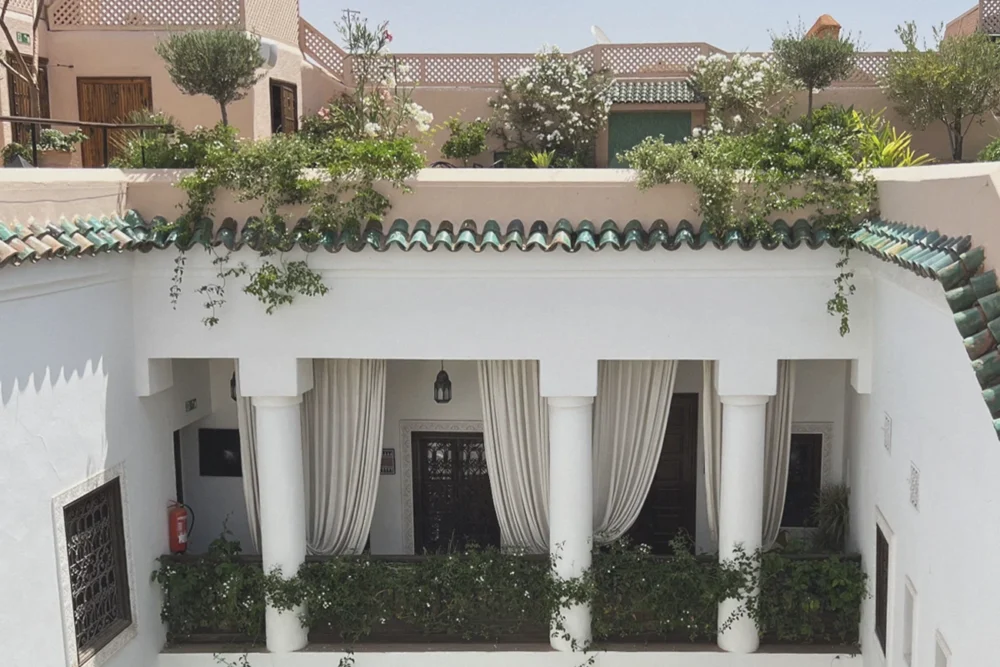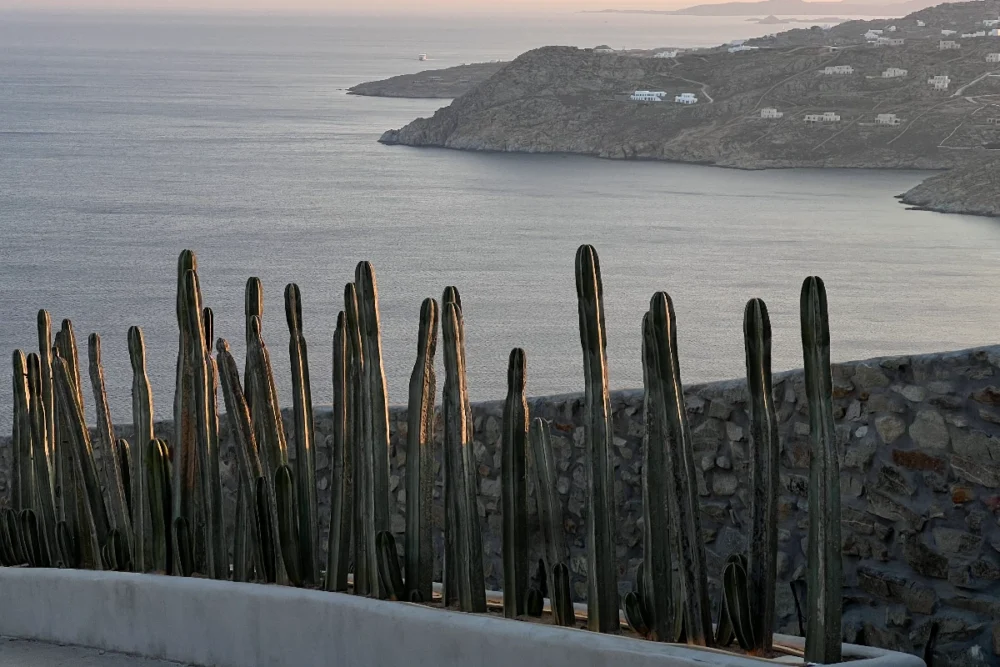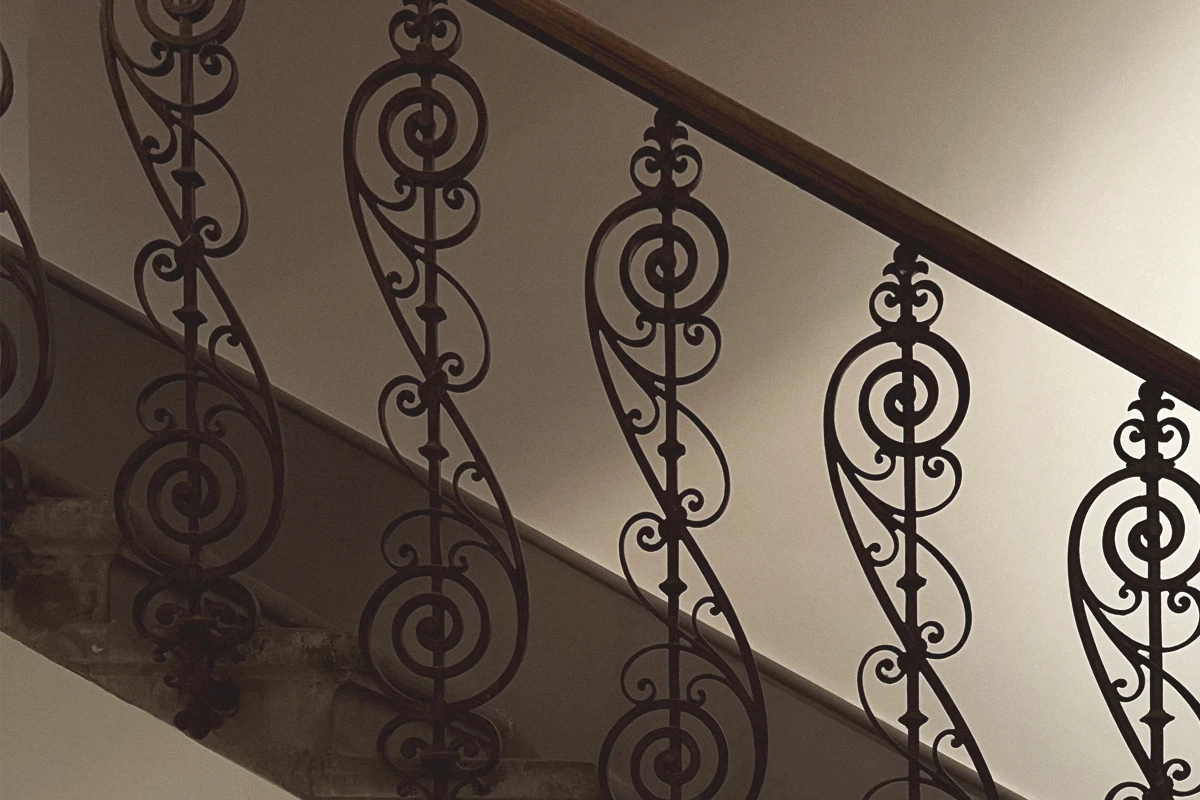
Frescoed Angels, Rough Stone, and Tuscan Marble: Two Heritage Buildings Reimagined in Florence
From medieval trade guild associations and 19th-century urban renewals to contemporary design interventions: Hotel Calimala preserves the past and writes a new chapter in Florence’s ongoing story
Just a short stroll from Piazza della Repubblica and Via de’ Calzaiuoli, in Florence, two neighboring buildings come together under a single name: Hotel Calimala. Yet, this moniker conceals the fact that they are actually two distinct properties, Calimala The East and Calimala The West, each housed in its own architectural world. One is a 19th-century Eclectic building, the other a Gothic-inspired edifice originally conceived by architect Pietro Maria Bardi, and together they reflect Florence’s knack for weaving medieval, Renaissance, and modern influences into something remarkably cohesive.
The Meaning of “Calimala”: Tracing a Guild’s Legacy
Anyone who wanders down Via Calimala might assume the name is simply tied to the street, but it carries a deeper resonance: Calimala hearkens back to one of Florence’s most influential trade guilds – the Arte di Calimala – which helped shape the city’s status as a commercial powerhouse. In medieval Florence, guilds were the beating heart of civic life. They regulated trades, sponsored grand public works, and became engines of innovation and expansion.
It was the Arte di Calimala’s task to transform imported woolens into a refined product that reached buyers all over Europe. In a Florence packed with fortified towers and narrow lanes, the hum of looms and the bustle of merchants on Via Calimala symbolized the city’s forward-thinking spirit. Today, amid the swirl of tourists and the glow of designer boutiques, the street still bears that sense of industrious energy. Naming two boutique hotels after the venerable guild signals a commitment not just to Florence’s past but to its evolving cultural tapestry.
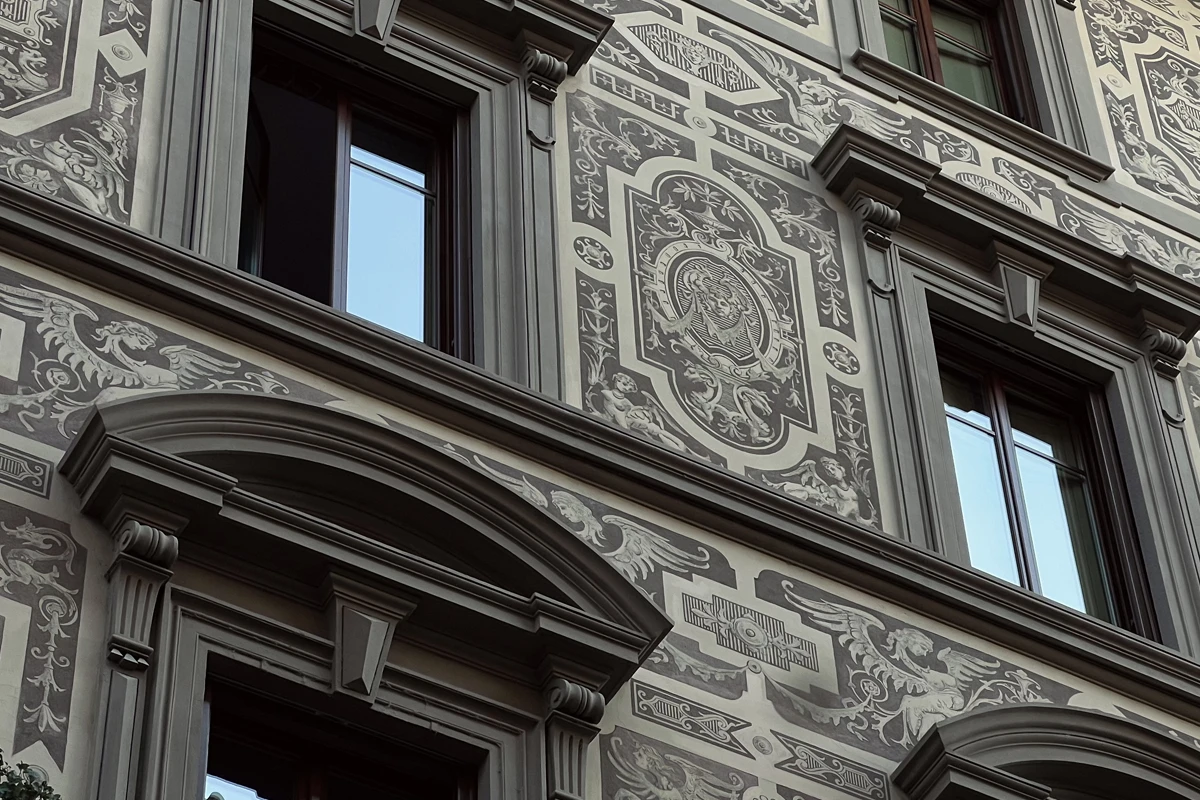
Palazzo degli Angeli, completed in 1892 to designs by architect Giuseppe Boccini
Hotel Calimala opened in 2019 in the historic building named the Palazzo degli Angeli – a 19th-century structure that had already lived multiple lives over the centuries. The name of the palace was given by the owners in recent times, after the 2015 renovation, in references to the cherubs and angels that are depicted in the exterior decorative paintings.
Before the palazzo was built, this neighborhood was occupied by the historic homes of the Cavalcanti and Borromei families – two prominent Florentine lineages. As the city modernized in the mid-1800s, it undertook large-scale projects to widen key streets, including Via de’ Calzaiuoli, linking the church of Orsanmichele with the Duomo. By the 1880s, concerns over unsanitary conditions in the old ghetto spurred a wave of demolitions and rebuilding. The resulting district around Piazza della Repubblica took on a more uniform, rigid appearance, contrasting with Florence’s older, more organic urban fabric.
Completed in 1892 to designs by architect Giuseppe Boccini, Palazzo degli Angeli emerged from this period of sweeping change. Although some critics felt the new buildings disrupted the medieval character of the city, Palazzo degli Angeli tempered its modern lines with generous decorative flair. In a nod to Renaissance and Mannerist traditions, the building incorporates rusticated corners, framed windows, and sgraffito frescoes—yet the swirling angels and mythological creatures also reveal a distinctly late 19th-century sensibility.

Aldo Palazzeschi: The Literary Legacy Imprinted in Stone
Among the many chapters in Palazzo degli Angeli’s history is the period when Aldo Palazzeschi made it his home. Born Aldo Giurlani in 1885, he would become an avant-garde poet, novelist, and essayist who challenged literary conventions. In the early 20th century, Palazzeschi hosted a gathering here that brought together the Milanese Futurists—Marinetti, Boccioni, Carrà—and Florentine intellectuals like Soffici and Papini. Tensions between the two camps ran high, but that evening saw a brief reconciliation in the palazzo’s salons, influencing Italy’s cultural trajectory. Long after the guests departed, Palazzeschi’s spirit of inventive disruption lingered, embedding a legacy of creative collaboration into the palazzo’s very walls.
Calimala The West: A 19th-Century Gothic Reimagining
In 2023, Hotel Calimala branched into a second building just next door: Calimala The West. Architect Pietro Maria Bardi had envisioned a Gothic Revival design for the property, a style that in Florence skews toward harmony and proportion rather than the dramatic flourishes typical of Northern Europe. Inside, slender columns, pointed arches, and thick load-bearing walls posed a challenge for modern renovations.
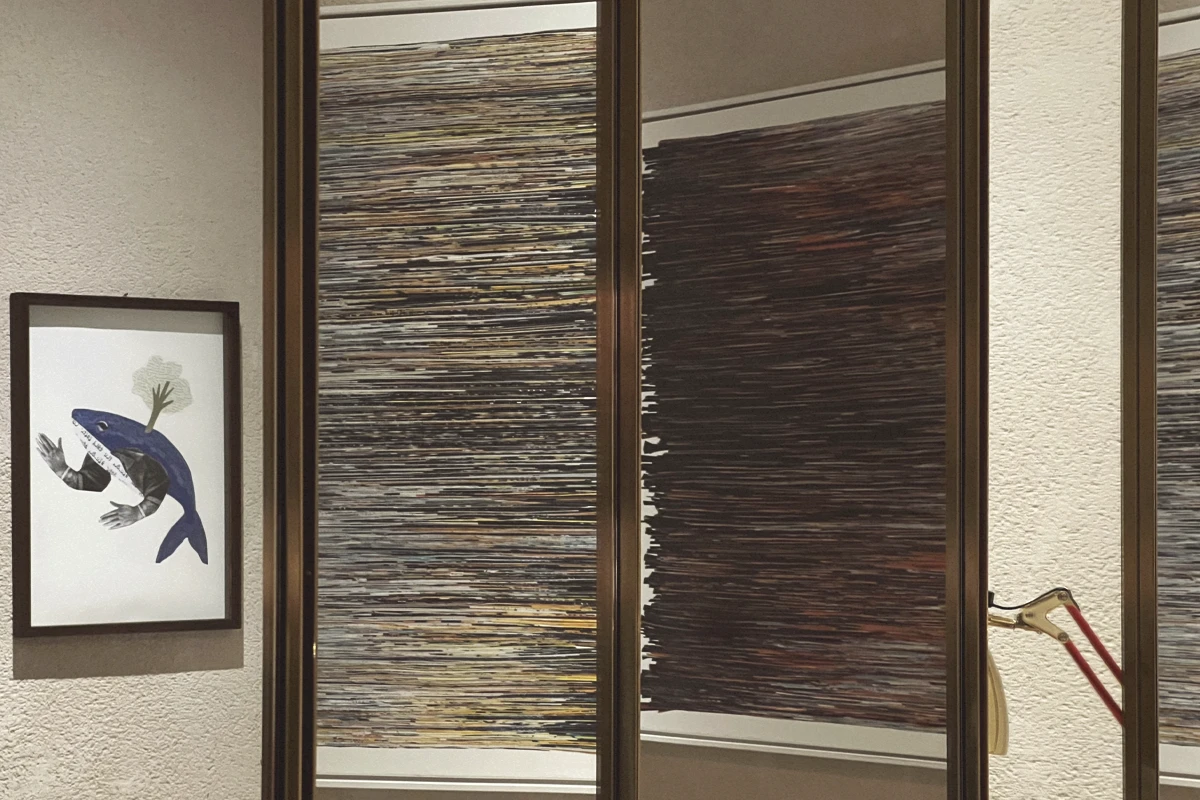
The Interior Design Project for Calimala Hotel by Alex Meitlis
Architect Alex Meitlis directed the redesign for Hotel Calimala. With a résumé spanning Jerusalem and London, he has earned acclaim for highlighting existing architectural features rather than burying them under a new aesthetic.
At Hotel Calimala, he has spotlighted local materials such as pietra serena and Tuscan marble, creating a tactile and visual link to Florence’s many churches and historic cloisters. Moreover, Meitlis creates an aesthetic and tactile bridge to Israel—drawing on the pastel, vivid colors of the Middle East and the rugged texture of Jerusalem stone. Smooth metal fixtures flank exposed brick, and century-old beams hover above terrazzo floors, forming a quiet dialogue between eras. His global influences, shaped by training at the Bezalel Academy of Art & Design, the Architectural Association in London, and experiences with Richard Rogers and Ron Arad, translate into a respectful yet forward-thinking approach that never forgets where it stands: the cradle of the Renaissance.
All the furniture—from tables and beds to lounge chairs, headboards, and lighting fixtures—was designed and produced according to Meitlis’s plans, creating a consistent look throughout the interiors. Meanwhile, Ivo Bisignano’s branding and design elements appear at every corner, merging art and function. Meitlis chose velvet, brass, and marble as the primary materials, and paired them with upholstery made of Kvadrat textiles, a Danish brand known for contemporary, durable fabrics widely used in modern architecture and design. Original oak shutters remain intact, preserving a link to the building’s heritage while coexisting with the new design.
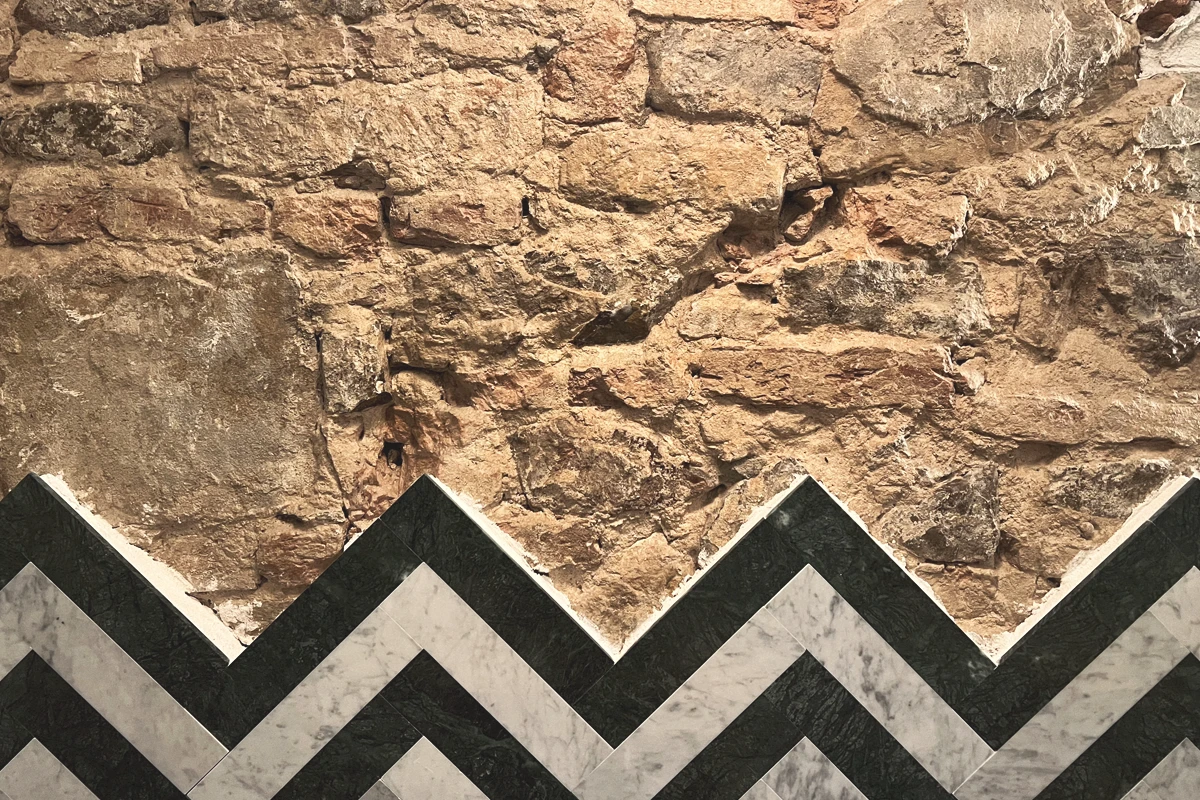
Art at Hotel Calimala: Contemporary Dialogues in a Historic Setting
A selection of contemporary artworks runs through both buildings, handpicked by in-house curator Carmel Ilan to forge a conversation between modern aesthetics and Florence’s centuries-old artistic heritage. More than one hundred pieces—encompassing painting, illustration, sculpture, and photography—are on display in public areas and guest rooms, all available for purchase.
Ilan’s curation spotlights five principal artists. Mosh Kashi is primarily known for his expressive paintings, while Boaz Noy explores the boundary between reality and illusion through photography enhanced by digital techniques. Ivo Bisignano—an Italian creative who lived between London and Tel Aviv, and who passed away prematurely—produced bold illustrations and sculptures that blend fashion influences with fine art elements. Inbal Luisa Algazi contributes sculptural and textural works that engage with form and memory, and Ilan herself adds her signature paper-based collages to the mix. Their combined presence ensures that guests experience a living gallery, one that both resonates with Florence’s historic environment and reflects the spirit of contemporary artistic innovation.
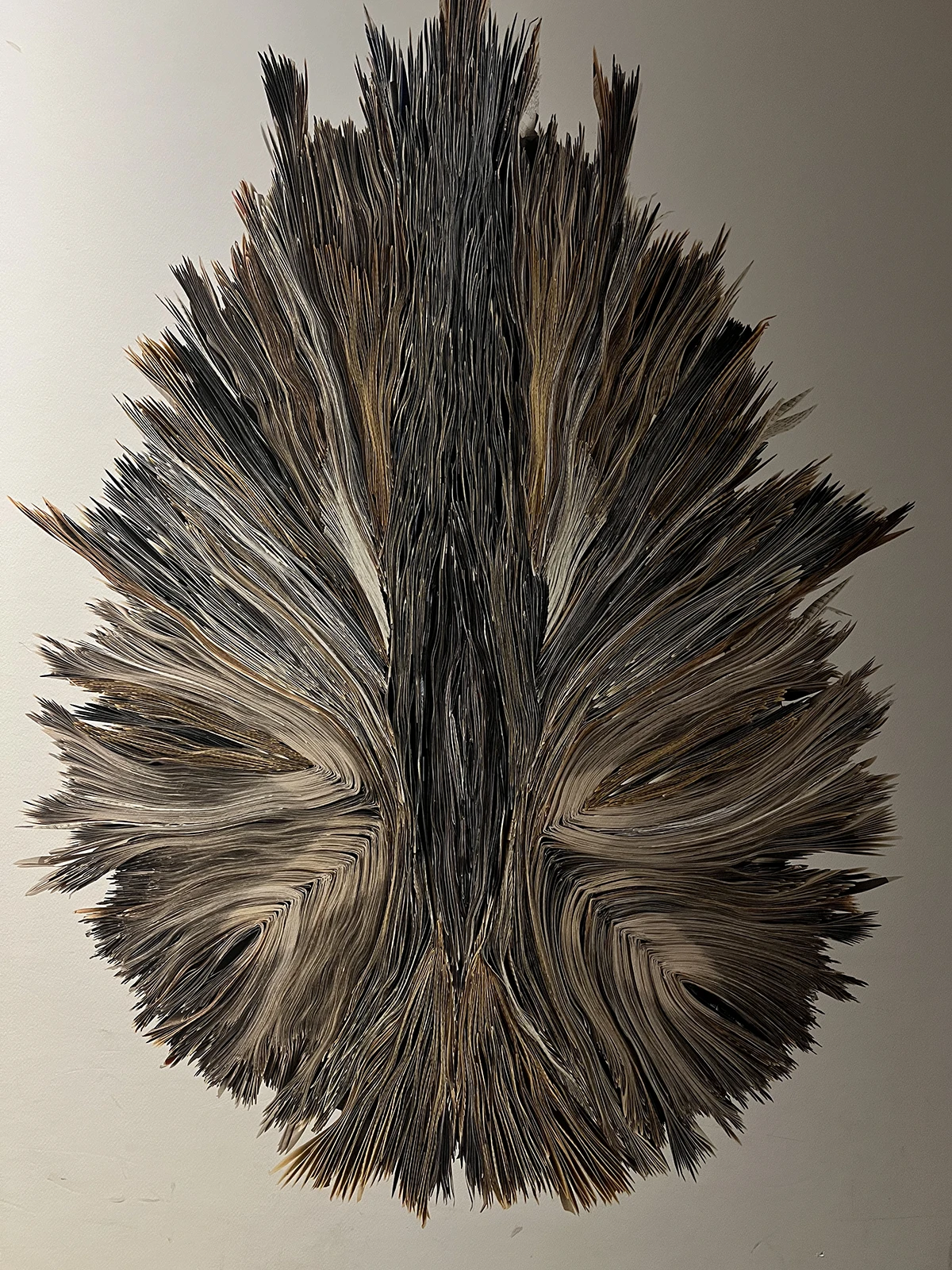
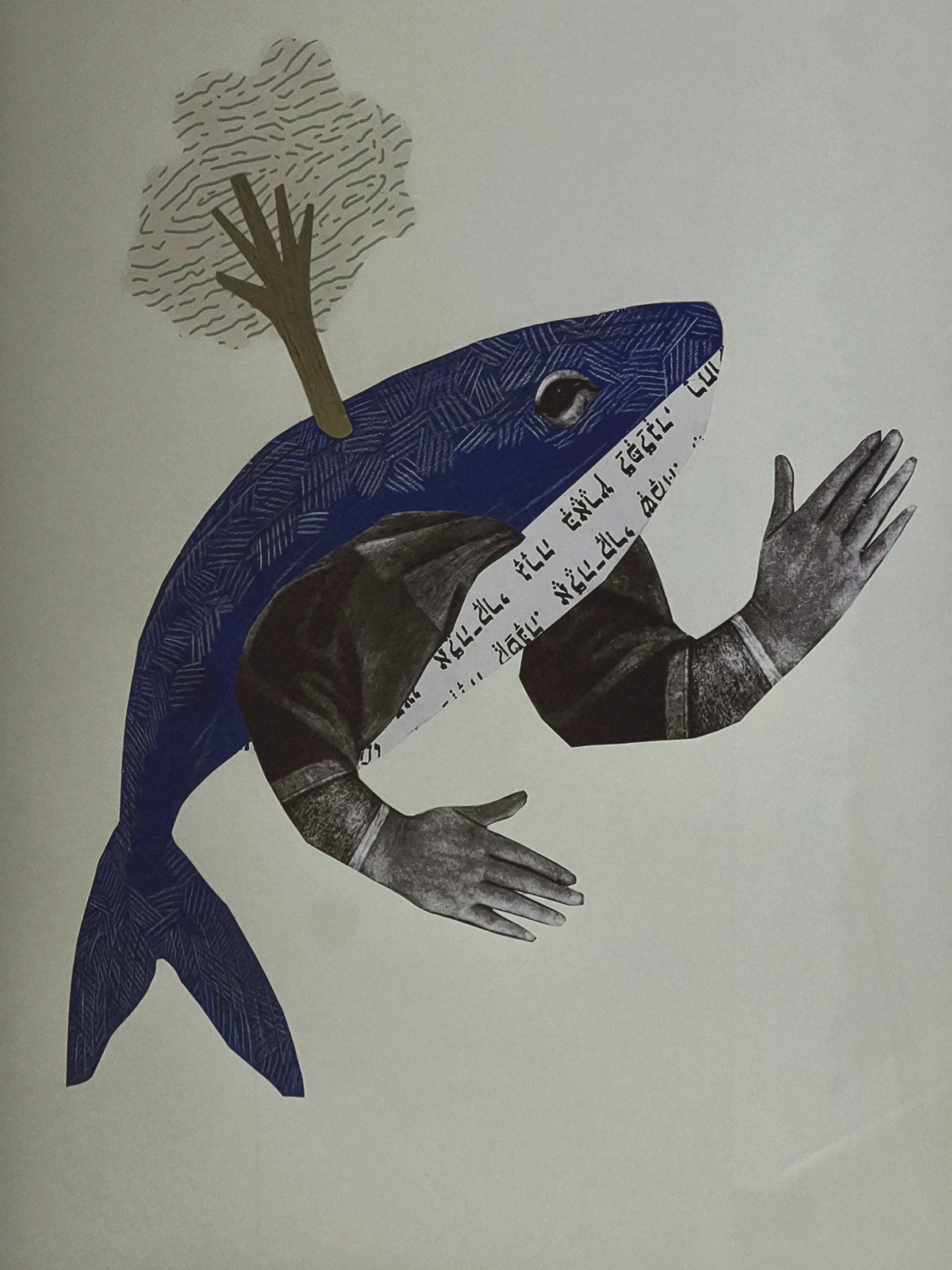
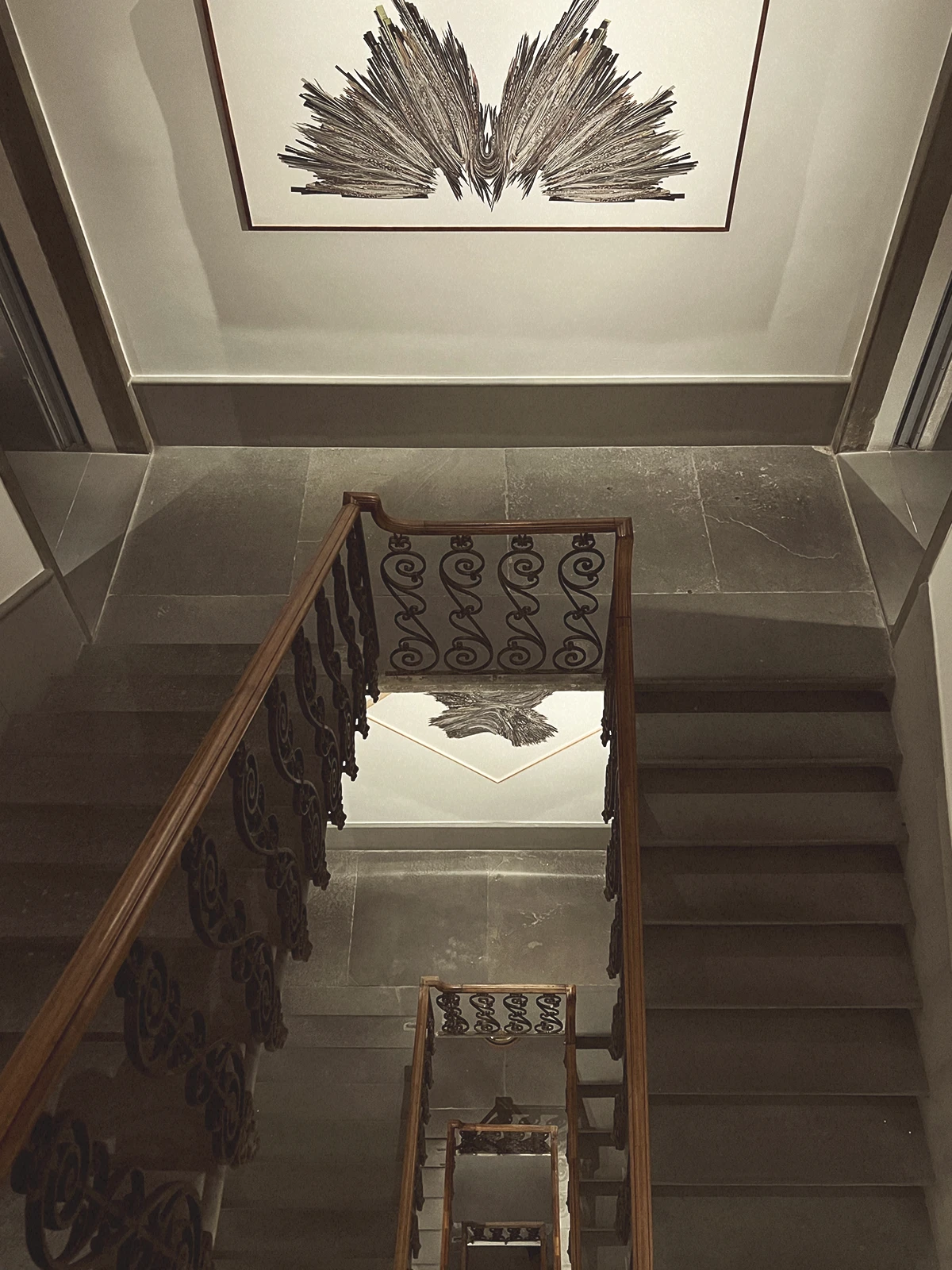
ANGEL Roofbar & Dining at Calimala The East
High above Florence’s historic streets, the rooftop of Palazzo degli Angeli—home to ANGEL Roofbar & Dining—unfurls in a blend of brickwork, terraces, and lush foliage. A fountain sits at the center, with stairs leading to two matching elevated platforms that command sweeping views of the city below. On one side looms the medieval outline of Palazzo della Signoria and its towering spire; on the other rises the majestic Duomo, flanked by Giotto’s Campanile—a Gothic landmark finished by Francesco Talenti in 1359. Encircling it all is the vast panorama of Florence and its centuries of history, spilling out toward the rolling Tuscan hills.
ANGEL’s menu draws on Mediterranean influences while showcasing Tuscan ingredients. Middle Eastern accents reflect the chef’s background, a testament to Florence’s enduring spirit of cultural exchange. Weekend DJ sets and a rare rooftop plunge pool introduce a contemporary note to a city that has always balanced heritage and modern life.
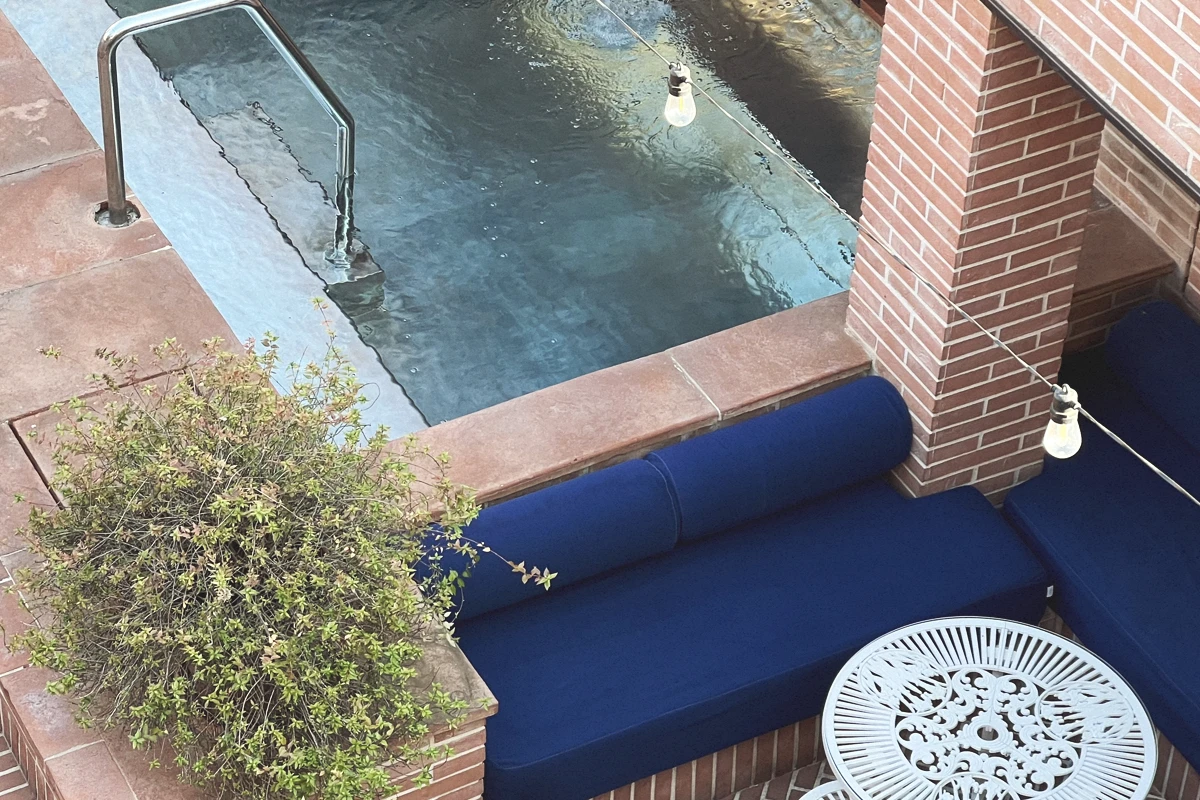

Meze at Calimala The West
When Calimala The West opened, it introduced the ground-floor restaurant Meze. Mornings bring an Italian-Continental breakfast of fresh pastries, vibrant produce, and bold espresso. As the day progresses, the restaurant subtly shifts to a Mediterranean and Middle Eastern–inspired concept. Chefs plan to broaden the menu in the coming months, showcasing Tuscan ingredients like Chianti wine alongside Levantine accents such as hummus drizzled with local olive oil. The fusion recalls Florence’s mercantile past, when traders from all over the Mediterranean would pass through these streets, leaving bits of their culture behind.

The Milu Hotel Group: Real Estate Meets Boutique Hospitality
Hotel Calimala belongs to the Milu Hotel Group, founded by Itay Properties SRL in 2015. The group’s mission centers on discovering architecturally and historically significant properties—often in prime urban locations—and reimagining them as design-focused boutique hotels. It began with the Milu Hotel, also in Florence, where curated art and venerable architecture combined to win acclaim. Each subsequent venture has followed a similar ethos: treat heritage buildings as living artifacts that can evolve with the times.
Matteo Mammoli


